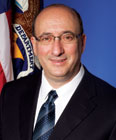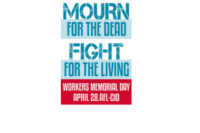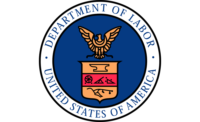 Remarks by Dr. David Michaels, Assistant Secretary of Labor for Occupational Safety and Health on Workers' Memorial Day
Remarks by Dr. David Michaels, Assistant Secretary of Labor for Occupational Safety and Health on Workers' Memorial Day
April 29, 2013:
Workers' Memorial Day is the day we set aside to remember those who have suffered or died on the job, and to renew our efforts to make sure workplaces are safe.
I'm honored to be here today with all of you to acknowledge the dignity and rights of America's workers and remember the human faces behind our work at the Department of Labor.
A scene reminscent of 9/11
Sadly, we have more to reflect on this year than we would have liked. Our hearts go out to the families who lost loved ones in the April 17 fertilizer plant fire and explosion in West, Texas.
Among the 14 dead and approximately 200 wounded were heroic paramedics and firefighters, and plant workers who - in a scene reminiscent of 9/11 — rushed toward the fire, desperately trying to cool the fire to give time to warn and evacuate residents.
Today our thoughts and prayers are with their grieving families and everyone in the community. We want them to know that OSHA is working closely with other government agencies and we will not rest until we have determined how this disaster happened and what can be done to prevent similar tragedies.
We have a full and meaningful program for you today. We will hear from Acting Secretary Seth Harris and Assistant Secretary Joe Main, whose presence here today is a testament to the Department's tireless commitment to the health and safety of America's workforce.
Our program also includes remarks from Danielle Dole and Dr. Bridgette Hubble Hester, two family members of fallen workers who have travelled many miles to be with us today.
Then I will be joined onstage by two renowned advocates for workers' rights, Chris Owens and Alma Couverthie, for a panel on what can be done to better protect temporary and contingent workers.
We here in Washington spend a lot of time dealing with paper and bureaucracy. And sometimes we need to be reminded what it's all about and why we do what we do. So before we begin our program, I'd like to read from a letter written to the President and Mrs. Obama from a woman whose husband was seriously injured on the job—from a preventable injury:
Struggling financially after an accident
While working at a foam insulation company, her husband Robert was sent into a foam grinding machine to clean out the plastic stuck inside the grinding mechanism. While inside, the machine was suddenly re-energized, trapping her husband and mangling both of his feet. He was able to escape with his life, but sustained severe injuries that have required numerous surgeries and that continue to cause him chronic pain to this very day.
In part, the letter reads:
"We have three children, Evan who is 3 ½, Tristan who is 2 ½, and their new sister Hailey who is 3 months old, my husband is unable to be the kind of father that so many people wish to be due to his injuries. We are struggling financially so badly because of this “accident” and the negative affect it has had on his pay."
"We can barely afford gas to go to the grocery store to buy food. We have had to borrow money for gas to get our children to the doctors and for diapers, wipes, etc."
"When my husband was injured we were living in a homeless shelter… saving money for a place and about to move into a place… the following weekend. The day he was hurt…everything in life just crashed for our family who had just gotten back together."
"We wish to have answers to why there are so many laws…to protect the employers, when in cases like this, if the employer had done THEIR job enforcing OSHA regulations, accidents like the one my husband was involved in would never happen."
The effects of workplace injuries
This is why we do what we do. We spend a lot of time focusing on the thousands of workplace fatalities that occur every year – and rightly so. But sometimes we forget about the millions who suffer disabling workplace injuries and the effect that has on their lives and the economy of this country.
We know that one workplace injury can drop a family from the middle class and have significant negative consequences for all the members of that family for many years after that injury occurs.
It is stories like these that stay with me, and I know they stay with you as well—strengthening our resolve to fight harder and stronger to make sure that tragedies like this one do not keep happening.
Temporary workers at greater risk
In recent months, we have received many reports of temporary workers suffering fatal injuries, some during their first days on the job.
Samir Storey was killed in a South Carolina paper plant on his first day on the job. He was sent in to clean a 7-story high chemical tank and was trapped inside when the tank began to fill with toxic liquid and vapor. He left behind his wife and their three children.
Twenty-eight-year-old Adrien Zamora fell 40 feet from a scaffold while restoring an 11-story building in New York. It was his first day on the job, and he had not been given a fall protection harness or the necessary safety training. He also left behind a wife and their two young daughters.
And one of our most recent high-profile cases was with Bacardi Bottling Corp. following the death of a 21-year-old temporary worker.
Lawrence Daquan "Day" Davis was crushed to death on his very first day at work while he was cleaning up glass inside a palletizer at the Florida bottling facility. Our investigation found that he and his co-workers were never trained in the simple lockout/tagout procedures that would have saved his life.
Given the enormous size of the temporary workforce and the recent reports of temporary workers being killed on the job, and these recent high-profile egregious fatality cases, OSHA is announcing a concerted initiative to use enforcement, outreach and training to assure that temporary workers are protected from workplace hazards.
Just last week, the Department of Labor’s Bureau of Labor Statistics released new data on the workers who have been killed on the job. Data from the Census of Fatal Occupational Injuries shows that in 2011, fatal work injuries involving contractors accounted for 542 of the 4,693 reported fatal work injuries, or 12 percent.
The report also noted that Hispanic and Latino contractors accounted for 28 percent of fatal work injuries for contractors, well above their 16 percent share in the overall fatal work injury total for 2011.
Under the OSHA law, all this nation’s workers have the right to safe working conditions, and employers have the duty to provide necessary safety and health training to all workers regarding workplace hazards.
Today, as part of our initiative, OSHA has sent a memorandum to its Regional Administrators underscoring the importance of assessing whether employers who use temporary workers are complying with their responsibilities under the OSHA law.



